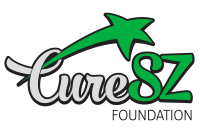
Dr. Craig Chepke, Member, Board of Directors, The CURESZ Foundation, Private Practice Psychiatrist and Adjunct Assistant Professor of Psychiatry, University of North Carolina School of Medicine
Despite the recent availability of safe and effective treatments for Tardive Dyskinesia, many healthcare providers remain hesitant to use them. They may believe that TD does not bother those who suffer from it or feel that the impact of TD pales in comparison to the primary symptoms they are treating, such as psychosis or mania. My experience is that some clinicians just don’t realize that the involuntary movements can cause physical, emotional, and interpersonal problems.
A specific case from my practice is a 61- year- old woman who was seeking treatment for depression, but I also noticed TD. Through our discussion, I found that she had loved to sing at church until her lip movements made the choir director think she was singing at the wrong times, so she quit. She stopped attending services when her hand movements caused her to rustle the Church bulletin she was holding, drawing complaints from the congregation. She lives with her daughter and young grandchildren and was devastated when they called her a “monster” because of the facial contortions the dyskinesia caused. She refused to come out of her room, even for meals, and lost 40 pounds over 6 months.
She thought she needed an antidepressant, but a little over a month after I prescribed her a VMAT2 inhibitor, she was back to playing with her grandkids, attending church, and singing in the choir again!
Have you ever told someone they had food visibly stuck in their teeth? Almost everyone has done this, but stop and consider why we do so. The person generally has no idea that it’s present, but we thought about how much it would embarrass us if the roles were reversed, and we’d hope someone would intervene for us. When such a minor cosmetic issue is universally recognized as problematic, how can it be denied that the irreversible movements of TD cause stigma?
Other disorders in medicine that don’t have noticeable symptoms aren’t written off so cavalierly. High cholesterol is a finding a clinician can only make when screening for it. Even though it “doesn’t bother anyone,” we still encourage treatment because it is a modifiable risk factor for cardiovascular disease. Similarly, healthcare providers should view TD as a potential source of other negative outcomes. People with TD can face social stigma and prejudice. However, dyskinesia in the trunk or legs can cause falls, and when it occurs in the muscles of swallowing, it can cause aspiration pneumonia. Just as knowingly not treating asymptomatic illnesses such as high cholesterol would be considered medical malpractice, so should failure to offer treatment for TD because it is a disfiguring and disabling neurological disease that must be treated, and the earlier the better.
There are so many tragic things that clinicians cannot easily change about their patients’ lives, like being homeless, unemployed, or the effects of growing up in an abusive family. However, when the movements of TD cause people to face discrimination or withdraw from family or society, there is now something that we can do. With the new VMAT2 inhibitors, this is now an unnecessary burden and a treatable illness. It is up to us to identify TD and educate the people with it on how it can affect them.
TD is more than skin deep – we can and must give people with TD their functioning and dignity back.

